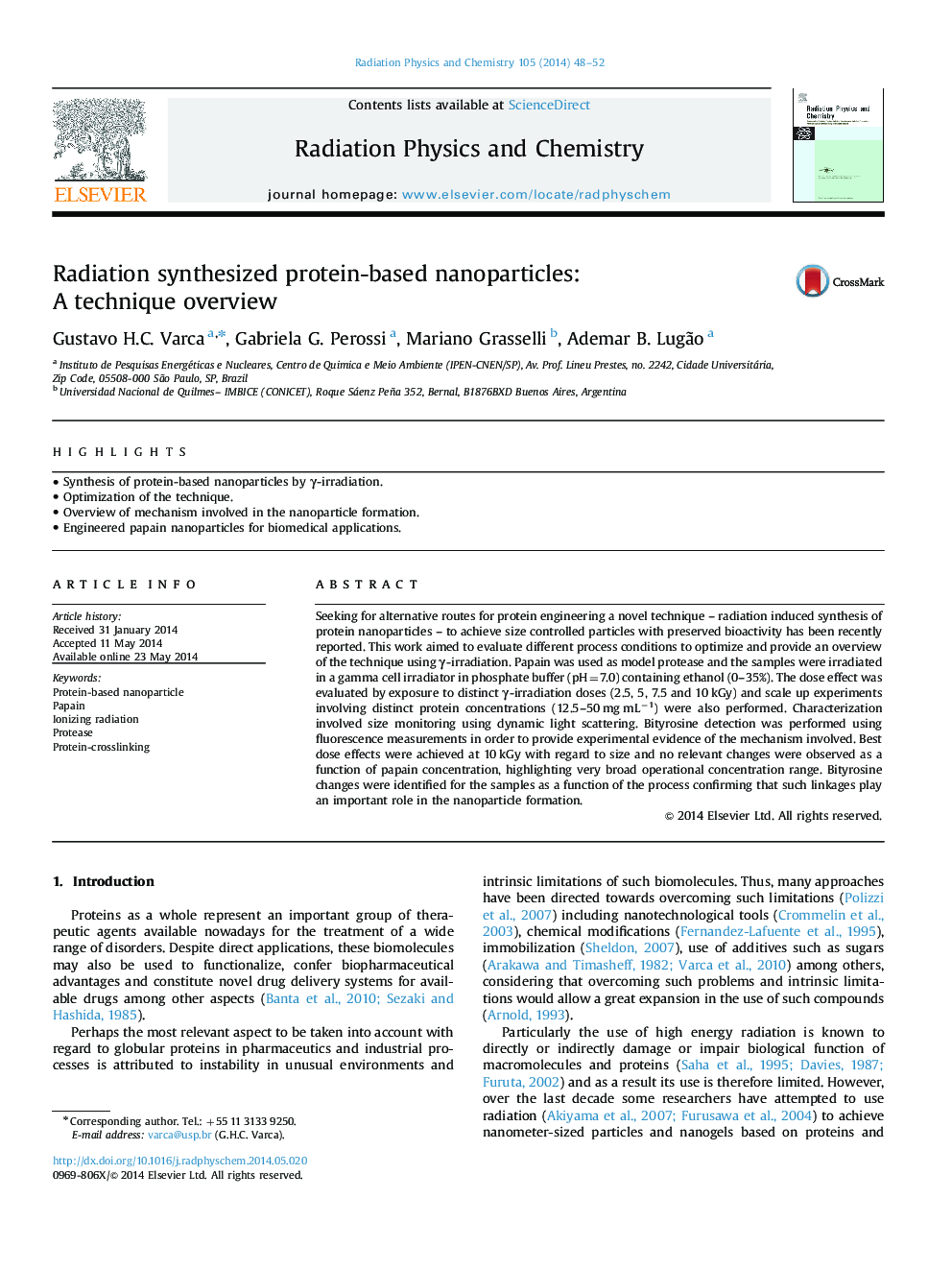| Article ID | Journal | Published Year | Pages | File Type |
|---|---|---|---|---|
| 1886019 | Radiation Physics and Chemistry | 2014 | 5 Pages |
•Synthesis of protein-based nanoparticles by γ-irradiation.•Optimization of the technique.•Overview of mechanism involved in the nanoparticle formation.•Engineered papain nanoparticles for biomedical applications.
Seeking for alternative routes for protein engineering a novel technique – radiation induced synthesis of protein nanoparticles – to achieve size controlled particles with preserved bioactivity has been recently reported. This work aimed to evaluate different process conditions to optimize and provide an overview of the technique using γ-irradiation. Papain was used as model protease and the samples were irradiated in a gamma cell irradiator in phosphate buffer (pH=7.0) containing ethanol (0–35%). The dose effect was evaluated by exposure to distinct γ-irradiation doses (2.5, 5, 7.5 and 10 kGy) and scale up experiments involving distinct protein concentrations (12.5–50 mg mL−1) were also performed. Characterization involved size monitoring using dynamic light scattering. Bityrosine detection was performed using fluorescence measurements in order to provide experimental evidence of the mechanism involved. Best dose effects were achieved at 10 kGy with regard to size and no relevant changes were observed as a function of papain concentration, highlighting very broad operational concentration range. Bityrosine changes were identified for the samples as a function of the process confirming that such linkages play an important role in the nanoparticle formation.
